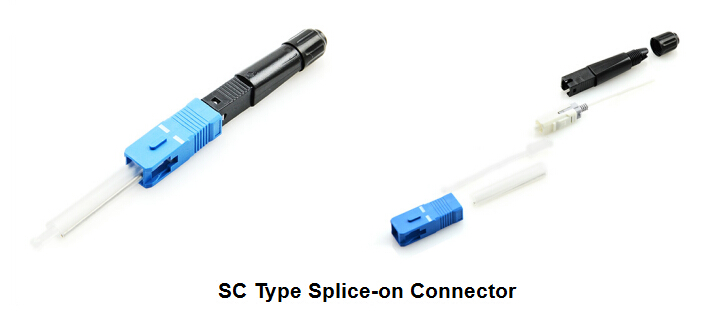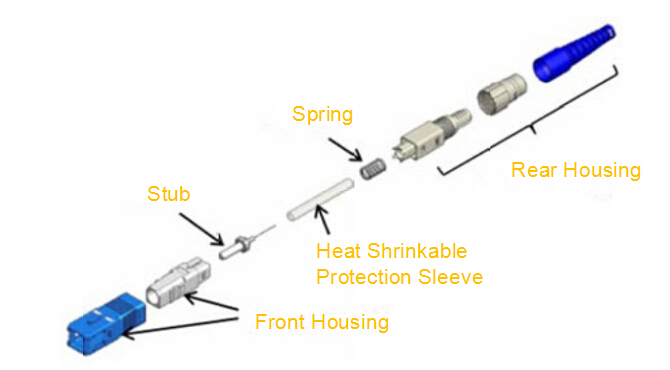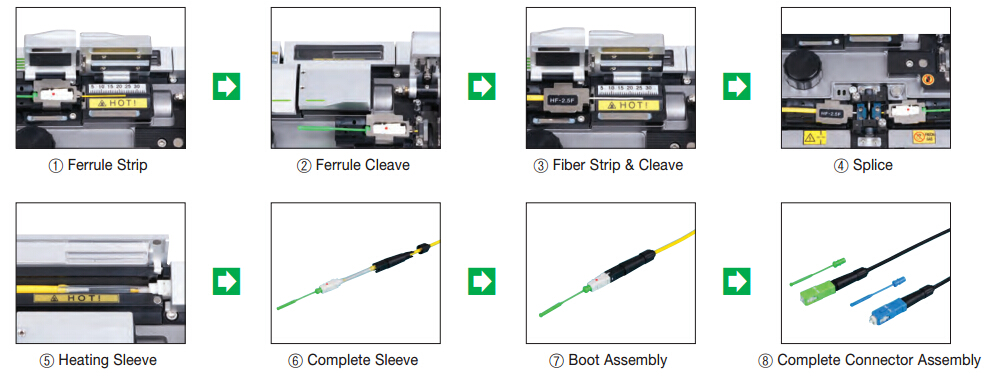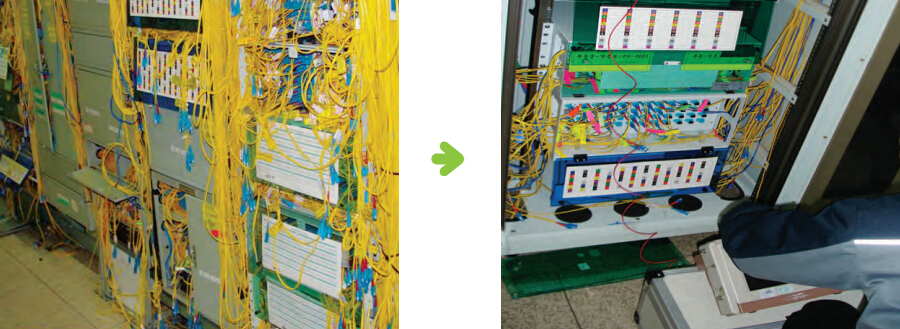There is no question that the demand for network capacity is accelerating dramatically as data traffic has proliferated. Hence, a great amount of optical fibers are deployed in the field in order to cope up with the requirements. Which inevitably exerts more work stress when polishing and terminating these massive fibers. Field-installable splice-on connectors, which can be terminated at the end of the cable in field by fusion splicing, can resolve this issue. This article will shed light on the functions and benefits of splice-on connector, and explain why we should consider it seriously.

A splice-on connector uses a fusion splicer to permanently join a fiber stub inside the connector with a fiber cable. The splice is protected within the boot of the connector. Splice-on connector features a factory pre-polished ferrule that eliminates the need for polishing and adhesives so they can be crimped in the field. Splice-on connectors significantly enhance the effectiveness of the termination and installation, which allow for unsurpassed performance and flexibility in the field. Moreover, splice-on connectors are easily assembled that requires minimal skill or training, and it presents the same high quality as the factory terminated one.

The diagram above typically illustrates the SC type of the field-installable splice-on connector. It generally consists of 8 parts. In addition to stub, which is a ferrule with a short fiber, and heat shrinkable sleeve, all housing parts are almost the same design as the standard connector.
The process for splice-on connector assembly is fairly easy, and SC or LC version simply has the same procedures. Here we take SC splice-on connector for example, just follow these steps:

Splice-on connectors generally expand our options for field-termination, technicians nowadays incline to embrace the splice-on connector for OSP environment, data center installation and multi-dwelling unit (MDU) networks. Here are six reasons why we should consider splice-on connector to network.
With a splice-on connector, the pigtail is eliminated since the fiber stub inside the connector is permanently joined with a fiber cable. The splice is protected within the connector boot. There is no need for splice tray, slack management of fiber strands, or other accessory.

Splice-on connector has better performance on insertion loss and return loss when compared with mechanical splice. By utilizing a fusion splicer, a splice-on connector creates a continuous connection in the glass by “welding” cores together. Which results in robust performance at the splice.
Splice-on connector gives installer much more flexibility by combining fusion splicing with a field-installable connector. It allows you to run drop cables to an end-user, cut the length you need and then attach the splice-on connector and plug it in, with no shorts or excess slack. Splice-on connector makes it possible to achieve durable, high-performance connection with the same amount of time it takes to complete a mechanical splice.

Most splice-on connector can be used in outdoor environments, providing permanent, robust connections in outdoor enclosures. They can remain stable through a wide range of temperatures and other harsh conditions.
When technician successfully completes the splicing task, most fusion splicer can notify them. This decrease the chance for installer skill that is required for mechanical splicing, making it easy to use splice-on connectors regardless of you are a beginner or expert.
The cost of fusion splicing tools once has stood in the way for the spread of fusion splicing. However, the industry has experienced significant decreases in splice prices in recent years. One can even choose to rent those devices if needed. Fusion splicing gains in much popularity that enables more installers to benefit from splice-on connectors for deployments.
Splice-on connectors simply combine the quality of fusion splicing with the ease of a field-installable connector. It enables technicians to realize greater efficiency and improve fiber management especially in tight space and high density environments. They have been extensively used in FTTx networks, cable TV backbone networks, outside plant and MDU FTTP cabling, as well as data center installation and connector restoration in the field. So why not consider splice-on connectors for your project?